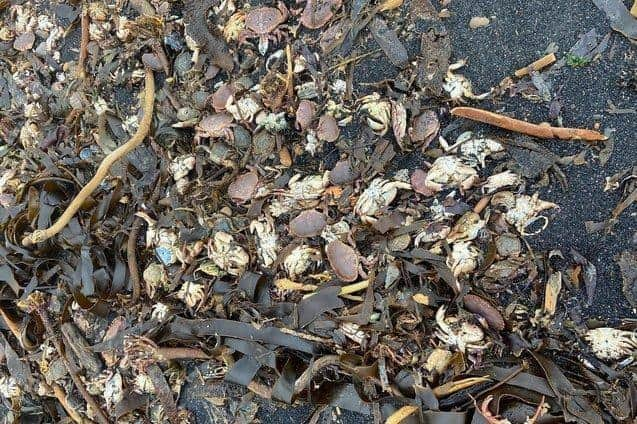Probe into mass crab and lobster deaths on Yorkshire coast reveals the culprit as 'harmful algal blooms'
and live on Freeview channel 276
DEFRA has now identified 'harmful algal blooms' as the cause of mass deaths along the coast from the Tees Estuary to as far south as Staithes and Whitby which were first reported last autumn.
Previous theories had centred around pollution, undersea cables, dredging activity and disease - yet the culprit has turned out to be toxic algae.
Advertisement
Hide AdAdvertisement
Hide AdA statement read: "Following significant testing and modelling to rule out possible causes, Defra and partner agencies consider that the deaths of the crabs and lobsters potentially resulted from a naturally occurring harmful algal bloom.


"From the evidence found during the investigation it is unlikely that chemical pollution, sewage or infectious aquatic animal diseases were the cause of the deaths.
"No traces of chemical contaminants have been found that could have caused an event of this scale.
"Follow up survey work carried out by the Environment Agency in January has also shown live healthy crabs present in the area, albeit in reduced numbers.
Advertisement
Hide AdAdvertisement
Hide Ad"A review of dredging activity and water samples found no evidence of a link between the disposal of dredged sediment and the deaths.
"The sampling of sediment that has been licenced by the MMO for disposal to the designated sites off the Tees confirmed that no chemical determinants exceeded concentrations that would be harmful to marine life.
"A further review of dredging, disposal activity and water samples found no evidence of a link between the disposal of dredged sediment and the mass crustacean deaths.
"This investigation was a multi-agency response, involving Defra, the Environment Agency, Centre for Environment, Fisheries and Aquaculture Science (Cefas), North Eastern Inshore Fisheries and Conservation Authority (NEIFCA), the Marine Management Organisation (MMO), Food Standards Agency (FSA), UK Health Security Agency (UKHSA), to identify what could have caused the event.
Advertisement
Hide AdAdvertisement
Hide Ad"Evidence gathered by government scientists and multiple agencies throughout this investigation will continue to be collated and studied. While this is no longer an active investigation, the agencies will continue to work with local fishers and remain on standby to respond if further events occur."
While the chemical pyridine was initially identified in crab from impacted areas, further investigations by the Environment Agency established that pyridine was not present in water and surface sediment samples collected off the Tees, and that pyridine is found in crabs taken from non-impacted areas. As such, the presence of pyridine in crab is likely to be linked to biological processes.
Results from cyanide analysis were below the detection limit of the test.
There is no evidence linking any reports of dead seals around the UK coasts to the investigation on crab and lobster deaths in the North East.
Advertisement
Hide AdAdvertisement
Hide AdThe joint investigation has not found any evidence of a food safety risk from healthy fish and crustacea, including crabs and lobsters caught off the North East coast. While there is no food safety risk from eating crabs that have been caught in waters off the North East coast, it is unsafe to eat dead or dying crabs found on the affected coast.
The public are encouraged to continue report any incidents of concern to the EA helpline on 0800 80 70 60 and industry are encouraged to contact NE IFCA on 01482 393 515 or [email protected].